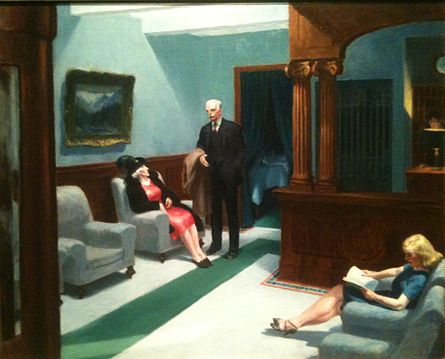Facts About Hotel Lobby
"Hotel Lobby" is a captivating oil painting created in 1943 by the renowned American realist painter Edward Hopper. Now part of the Indianapolis Museum of Art's collection, this piece portrays a moment in a hotel lobby featuring two women and a man. True to Hopper's style, the painting delves into themes of isolation and transient moments.
The older couple depicted in the artwork is believed to represent Hopper and his wife, adding layers of timelessness and drama reminiscent of classic film noir. Prior to completing "Hotel Lobby" Hopper meticulously crafted ten preliminary studies, which he later donated to the Whitney Museum of American Art. These studies offer a fascinating glimpse into his creative process, highlighting how he refined the painting's details and composition. Notably, Hopper's wife, Josephine, served as the model for the female figures in the painting.
Upon its unveiling, "Hotel Lobby" received mixed reviews. Some critics praised Hopper's distinctive style, while others felt it lacked innovation. Despite this, the painting earned the Logan Medal of the Arts in 1945. It has often been compared to Hopper's earlier works, such as "Summer Interior" for its masterful use of light, composition, and mood.
The painting was initially owned by Henry Hope of Bloomington, Indiana, before making its way into the Whitney Museum's collection. In 2006, it was exhibited alongside other Hopper masterpieces, and it now resides at the Indianapolis Museum of Art. "Hotel Lobby" has also graced book covers and numerous publications, solidifying its importance in American art history.

 Mexico
Mexico